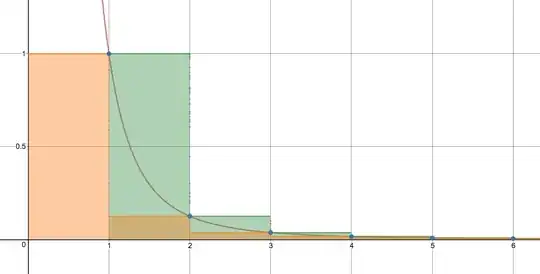I'm trying to prove that $\frac{9}{8} < \sum\limits_{n=1}^{\infty} \frac{1}{n^3} < \frac{5}{4}$. I've seen similar proofs to this that tend to approach the proofs geometrically, using the upper and lower bounds of the remainder, the sum of the series less its $k$th partial sum, generated from the integral test. It usually involves some trick like "excluding $k$ terms." My professor tends to start at the second term to find a "lower bound," from which the proof follows with algebraic manipulation, but seemed to suggest to me that this followed from trial and error.
So, with that said, I really can't say that I understand the intuition behind finding or proving this. The first step seems to be plotting $y = \frac{1}{x^3}$ and then considering upper and lower Riemann sums (geometrically, "boxes" above the curve that will generate a sum greater than the area below it and boxes below the curve that will generate a sum less than the area below it). Though I believe I can draw the graph, I'm struggling with how to approach the problem, even if I have the abstract idea right, which I quite doubt.
I'd very much appreciate if someone could shed some light on this. Thanks in advance.
